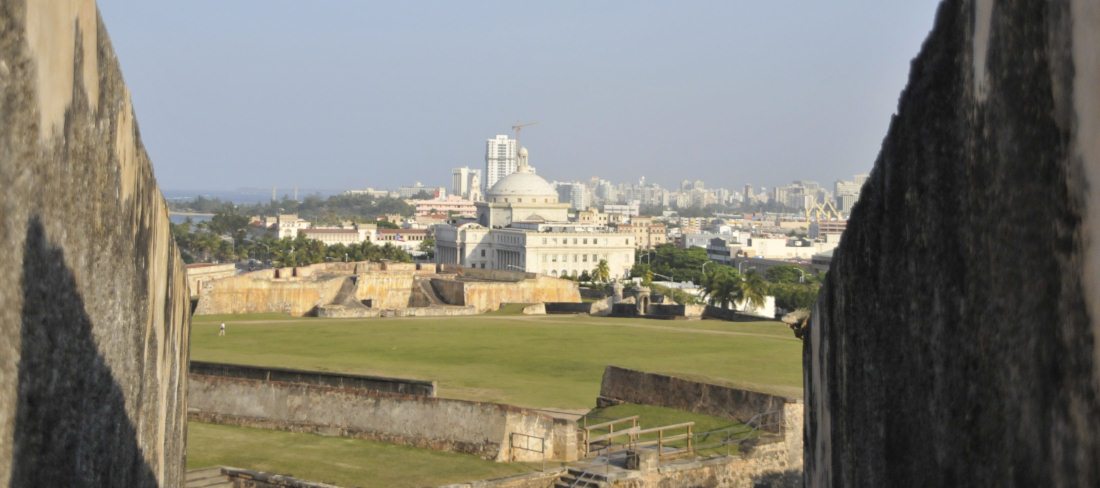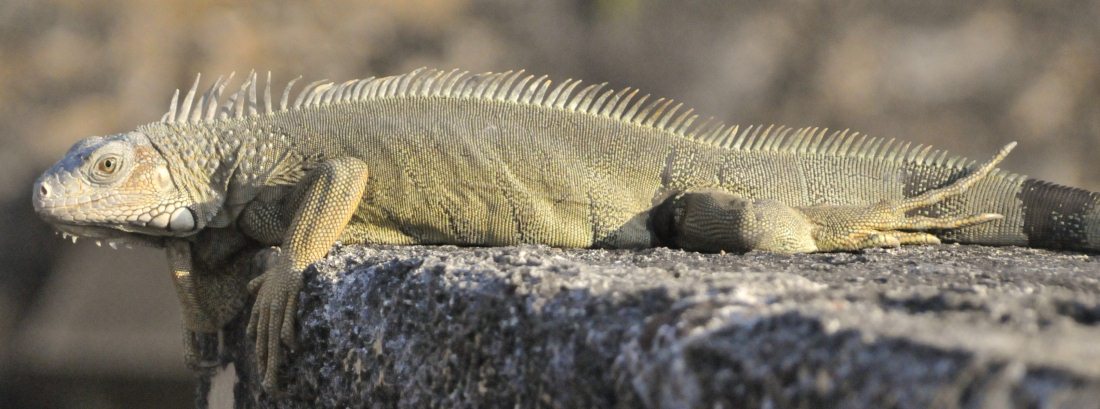Fort San Cristobal

|
Fort San Cristobal
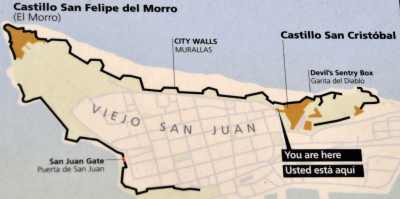 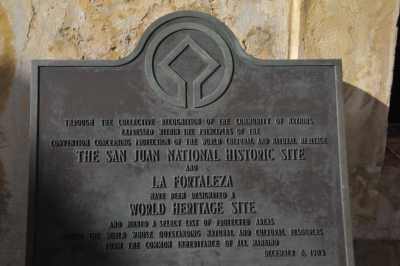
Castillo de San Cristobal is the largest fortification built by the Spanish in the New World. When it was finished in 1783 it covered about twenty seven acres of land, basically wrapping the city of San Juan. Entry to the city was sealed by San Cristobal's double gates. In 1897, after close to one hundred years of relative peace in the area, about a third of the fortification was demolished in to help ease the flow of traffic in and out of the walled city. It is a San Juan National Historic Site.
 Features
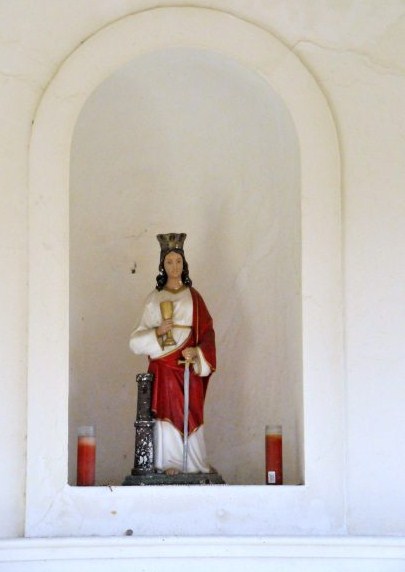  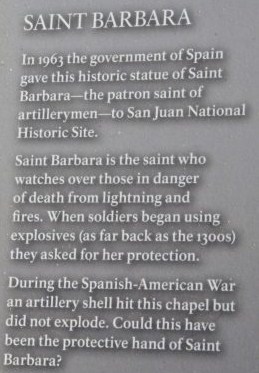 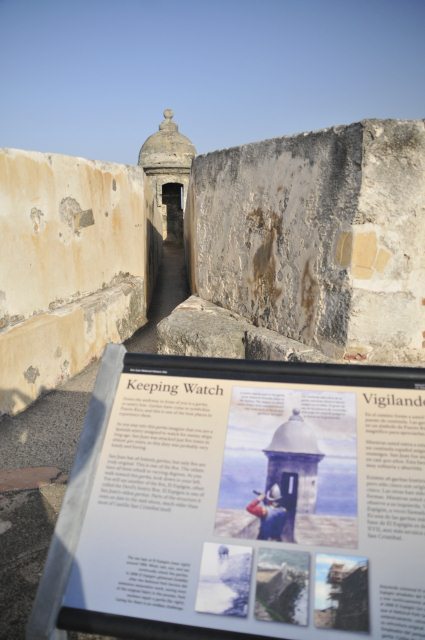 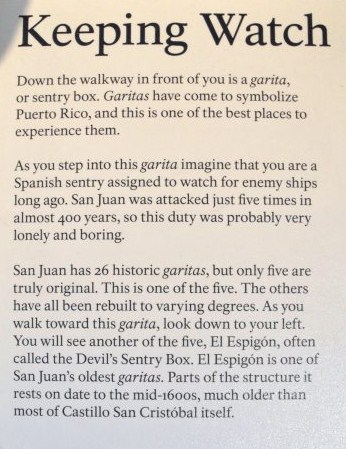
Most of San Juan's fortified walls have guerites (sentry boxes, "garitas" to the locals). This particular guerite is one of the oldest parts of the fort being built in 1634. Legend says that soldiers disappeared randomly from here. However, it is mostly believed - and told so in various local stories - that the only soldier that apparently disappeared did so to escape with his girlfriend. Everyone who visits the fort makes a b-line to see it.
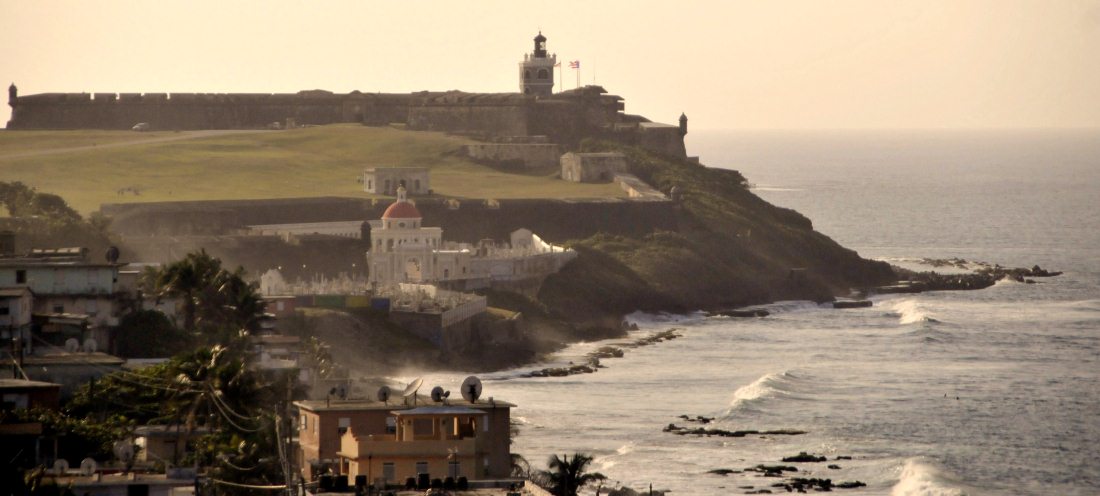
A view from the top looking toward El Morro at the top of the scene, over the beautiful graveyard and to the slum below it, got to have the best views of any slum and graveyard we have ever seen

A view of modern San Juan, if you look carefully at the end of the right hand wall at the top - there is a chap
I minced down the gap seen above, Bear was not too keen as everything "below" got a little taught
.... but it was well worth it, I am convinced he smiled for me.
Historical
timeline 1521 - San Juan founded by Spanish settlers from Caparra
1539 -Construction of the first fortified defenses at Fort San Felipe del Morro and La Fortaleza, with batteries aimed at the harbour entrance. 1634
- A small redoubt is built on the high ground known as San Cristobal on the
northeast side of San Juan. 1765-1783 -
Main period of construction of San Cristobal as we see it today under the
directions of Royal Engineers Thomas O'Daly and Juan Mestre. 1797 - San Cristobal helps repel the attack on San Juan from the land side by a British invasion force of 7,000 - 13,000 men commanded by Sir Ralph Abercromby. Abercromby's forces, one of the largest ever to invade Spanish territories in America, are halted a mile from San Cristobal at the Escambron defenses, also known as San Juan's First Line of Defense. 1855
- Mutiny by the San Cristobal artillery brigade against the Spanish crown. The
Castillo is held by rebels for 24 hours causing panic in the city when the
canons are turned around and aimed at the city. 1897
- A large segment of 18th century walls are dynamited from San Cristobal to the
harbor docks to allow San Juan to expand. 1898 - On the 10th of May 1898, the first shot which marked Puerto Rico's entry into the Spanish-American War was ordered by Captain Angel Rivero Mendez, against the USS Yale from the canon batteries. Two days later, San Cristobal's gunners duel with US Navy warships during a day long bombardment. Six months later Puerto Rico becomes US territory.
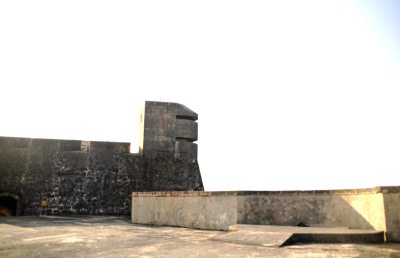 
1942
- Still an active military base when WWII
breaks out, concrete pillboxes and an underground
bunker control center are added to the ancient defenses of the Castillo San
Cristobal. 1949
- San Juan National Historic Site
is established as the most impressive structure in the new
world. 1961
- The US Army
moves out of the forts of Old San Juan,
and they become the jurisdiction of the United States National Park
Service,
to be preserved solely as museums. 1983 - San Juan National Historic Site is declared a World Heritage Site by the United Nations.
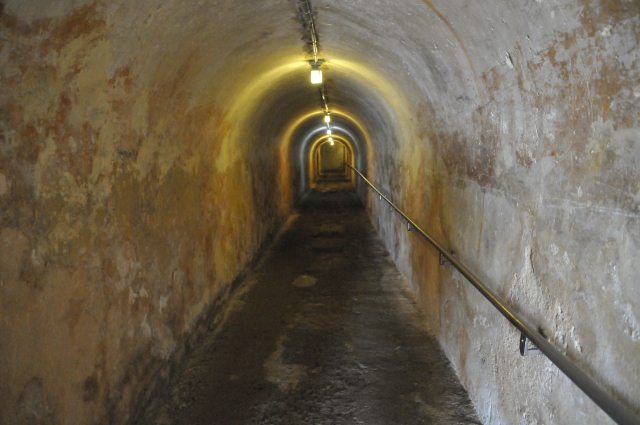
The last thing we did before leaving the fort, was walk down this exquisitely steep slope to look around the shop, visit the theatre to watch a historical film about the forts, once again we hear Sir Francis Drake was nothing but a pirate.............

and then we left by the rear exit back into the heat of the town.
ALL IN ALL WE WERE NOT AS CHARMED WITH THIS FORT COMPARED TO EL MORRO, NEVERTHELESS INCREDIBLY IMPRESSIVE
|
